OUTCROP
Newsletter of the Rocky Mountain Association of Geologists

































730 17th Street, B1, Denver, CO 80202 • 720-672-9898
The Rocky Mountain Association of Geologists (RMAG) is a nonprofit organization whose purposes are to promote interest in geology and allied sciences and their practical application, to foster scientific research and to encourage fellowship and cooperation among its members. The Outcrop is a monthly publication of the RMAG.
PRESIDENT Ben Burke bburke158@gmail.com
PRESIDENT-ELECT Mike Tischer mtischer@gmail.com
1st VICE PRESIDENT Ronald L. Parker parkero@gmail.com
1st VICE PRESIDENT-ELECT Lisa Wolff lwolff@bayless-cos.com
2nd VICE PRESIDENT Matt Bauer matthew.w.bauer.pg@gmail.com
2nd VICE PRESIDENT-ELECT
Jason Eleson jasoneleson3@gmail.com
SECRETARY Sandra Labrum slabrum@slb.com
TREASURER
Anna Phelps aphelps@sm-energy.com
TREASURER ELECT
Holly Lindsey holly@energyfunders.com
COUNSELOR
Steve Crouch scrouch@whiteeagleexploration.com
Rates and sizes can be found on page 3. Advertising rates apply to either black and white or color ads. Submit color ads in RGB color to be compatible with web format. Borders are recommended for advertisements that comprise less than one half page. Digital files must be PC compatible submitted in png, jpg, tif, pdf or eps formats at a minimum of 300 dpi. If you have any questions, please call the RMAG office at 720-672-9898.
Ad copy, signed contract and payment must be received before advertising insertion. Contact the RMAG office for details.
DEADLINES: Ad submissions are the 1st of every month for the following month’s publication.
The Outcrop is a monthly publication of the Rocky Mountain Association of Geologists
DESIGN/LAYOUT: Nate Silva | n8silva.com
EXECUTIVE DIRECTOR Bridget Crowther bcrowther@rmag.org
OPERATIONS ASSISTANT
Kimberly Burke kbure@rmag.org
LEAD EDITOR Nate LaFontaine nlafontaine@sm-energy.com
CONTRIBUTING EDITORS
Elijah Adeniyi elijahadeniyi@montana.edu
Marlee Cloos marlee.cloos@bpx.com
Danielle Robinson danielle.robinson@dvn.com
WEDNESDAY NOON LUNCHEON RESERVATIONS
RMAG Office: 720-672-9898
Fax: 323-352-0046 staff@rmag.org or www.rmag.org




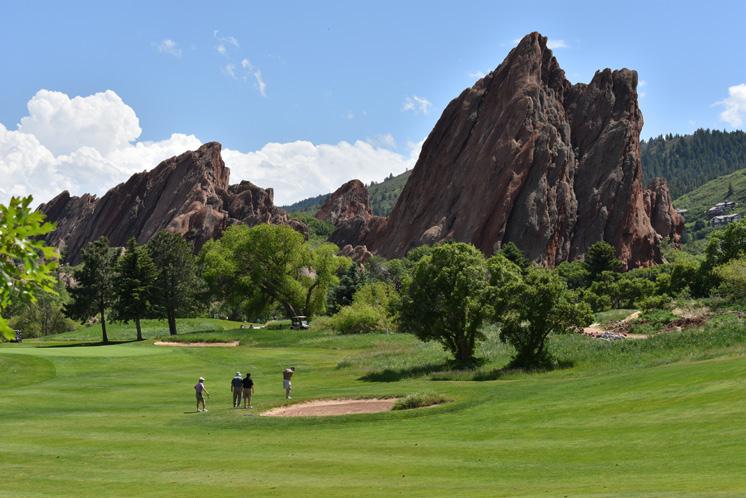
We extend our heartfelt gratitude to all participants for making the 2023 RMAG Golf Tournament a resounding success through your enthusiasm and sportsmanship.
AND THANK YOU TO OUR SPONSORS FOR MAKING IT POSSIBLE



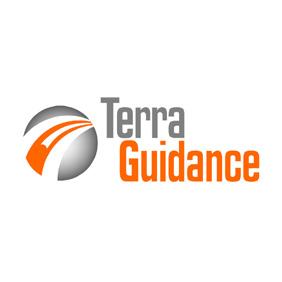


30

35
50




October 20, 2022
Geoscience Community:
We greatly appreciate every Summit Sponsor and Event Sponsor that has contributed to RMAG over the last year. We could not exist without your support.

In RMAG’s 100th year we have emerged from the global pandemic to return to many of RMAG’s beloved programs, and we created new programing to meet the needs of our members and the greater geoscience community. Monthly luncheons returned to in-person, with the addition live streaming. The 2022 Golf Tournament sold out bringing over 100 golfers out for a great afternoon together. The Powder River Basin Symposium offered two days of talks and core viewing to a packed room with attendees from across the country. Members young and old celebrated RMAG’s past and future at the 100th Anniversary Party. But that’s not all, the Diversity and Inclusion Committee in conjunction with Education Outreach attended numerous community outreach events from Girl Scout Days at Dinosaur Ridge to the Juneteenth Festival, sharing our members love of the geosciences with the next generation. Short courses were held both in person and online creating educational opportunities for members in Denver and across the country.
2023 brings new opportunities for RMAG. Your sponsorship dollars will help RMAG bring to fruition the 2023 North American Helium Symposium, an exciting Field Trip season, and a dynamic list of luncheon speakers on topics ranging from the state of the industry to the Williston Basin to geothermal energy storage. These dollars will allow RMAG Members to impact the next generation at outreach events throughout the community and provide opportunities for the geoscience community to connect and build their network. We’re looking forward to seeing everyone on a more regular basis.
Your sponsorship dollars support our excellent publications including the monthly Outcrop newsletter and the quarterly Mountain Geologist journal We recognize your financial commitment with in-person signage, website and publication advertising, as well and social media posts before each online event. With a LinkedIn group of almost 3000 members, we make our sponsors visible to the geoscience community for both virtual and in person events.
Thank you to those who are already a Summit Sponsor, we look forward to your continued support in 2023. If you are not already a sponsor, please look at the many complementary benefits included with the sponsorship levels. If our annual sponsorships don't make sense for your company, or you wish to sponsor something specific, ask about our single event sponsorship opportunities. Please feel free to contact our staff with questions by email: bcrowther@rmag.org or by phone at 720-672-9898 ext. 102.
We and the staff of RMAG thank you all for your continued support and look forward to seeing you in person this year.
 Ben Burke
Bridget Crowther 2023 RMAG President RMAG Executive Director
Ben Burke
Bridget Crowther 2023 RMAG President RMAG Executive Director
months of Outcrop advertising: To receive 12 full months, company logos and ad art must be received no later than the 20th of the month in which you register.
Points are
u l
and can be used for any social event. For example, 1 point means 1 golfer, or 1 registration for Rockbusters. *2 points can be used for a golf hole if that makes more sense for your company.
all event tickets please contact the RMAG office at staff@rmag.org to use your spots.

Payment Options
All sponsor benefits event tickets follow RMAG event registration deadlines. All benefits end 12 months after registration.
Platinum Sponsor
Gold Sponsor
Silver Sponsor
Summit Sponsorship benefit term is for 12 months! Specify type of payment on signed form, and send logo and advertisements to staff@rmag.org
Company:
Company Representative:
Address:
City: State: Zip Code:
Phone: Email:
Payment Method: Credit Card ACH Check
Credit Card Information:
Name as it appears on Credit Card:
Credit Card #:
Expiration Date:
Select Card: AMEX Mastercard VISA Discover Security Code:
Signature:
ACH: contact the RMAG office at staff@rmag.org for directions.
Mail Checks payable to RMAG:
Rocky Mountain Association of Geologists (RMAG)


730 17th Street, B1
Denver, CO 80202
RMAG events are subject to change. Cancellation or rescheduling of events does not give the sponsor the right to refund. Summit Sponsors will receive benefits at any new events added into the RMAG schedule.
Thank you for your generous support!
P: (720)672-9898
staff@rmag.org
www.rmag.org
730 17th Street, B1
Denver, CO 80202
Hi everyone! It’s the best time of the year here in Colorado, hopefully you can get outside and soak up the beautiful weather before it starts to snow. Also make sure that you check out the bios for the candidates for the board as its election season!

The September Board of Directors meeting took place September 20th, 2023, at 4:00pm online. All board members were present except two. The Finance committee started off the meeting with an overview of the financial standing in August. The finances in August saw a net operating loss but fortunately we have started receiving membership renewals as well as Summit sponsorships.
The Continuing Education Committee is continuing to host hybrid lunches at our new home, DERL. Please join us in October for Elizabeth S Petrie talk “Effects of variation in mechanical rock properties on fracture type
and gradient”. The Membership committee is continuing to host monthly events. October women’s coffee will be on October 3rd at Vibe Coffee. We are also hosting Happy Hour later in October. The Publications Committee is still hard at work making sure there is high quality content for both the Outcrop and the Mountain Geologist. The Educational Outreach is forming a steering committee to decide the future of the committee to determine the most effective use of their time. On the Rocks, is most of the way through the great field trips planned this year. Registration is open for most so sign up today for the remaining trips! Finally, Diversity and Inclusion committee has been hard at work bringing you member corners in each Outcrop as well as cohosting the women’s group coffee.
I hope you all have a fantastic October and happy Fall! Until next time!




As we step into the vibrant tapestry of October when the snow line and the fall colors move down the hill, it’s a pleasure to share another President’s Column with you. This month, we embark on a geological journey that takes us to the captivating realm of Red Rock Canyon Open Space for our last On The Rocks field trip of the season on October 28. At the start of the month, we have an engaging talk from Dr. Elizabeth Petrie, the Moncrief Chair of Petroleum Geology at Western Colorado University, on the impact of mechanical rock properties variation on fracture type and gradient on October 4.
Located in the Colorado Front Range near Manitou Springs, Red Rock Canyon Open Space is a geological treasure worth exploring. It might not have the fame of its northern neighbor, Red Rocks Amphitheatre, but it has its own unique charm. The park’s geological story revolves around the Fountain Formation, primarily from the Permian period. This formation comprises various sedimentary rocks, notably sandstones with distinctive red and brown hues due to iron oxides.
Red Rock Canyon’s trails offer a close look at the Fountain Formation, showcasing its sandstones, siltstones, and shales. Within these rocks, you’ll find cross-bedding and ripple marks and the evidence of complex ancient river channels with
varying degrees of bedload transport efficiency. Erosion has further shaped the landscape, creating the awe-inspiring vistas we enjoy today.
Our monthly lunch speaker on October 4 is Dr. Elizabeth Petrie, a distinguished geologist who has made noteworthy contributions to the study of how variations in mechanical rock properties influence fracture types and gradients. Her research is pivotal in advancing our understanding of geological processes and structural geology, with applications spanning resource exploration, underground storage, and subsurface fluid flow.
Dr. Petrie’s work revolves around unraveling the mechanical characteristics of rocks, including their strength, brittleness, and stress responses. She investigates how these properties impact the formation of fractures, encompassing tensional, compressional, shear, and hybrid fractures. Her findings have direct relevance to industries like oil and gas and geothermal, where knowledge of fracture types can optimize drilling techniques, reservoir management, and mass flow.
We are also well into annual national conference season, with the IMAGE Conference in Houston a month behind us, the Geothermal Rising Conference in Reno, Nevada in early October, the Geological Society of America annual meeting in Pittsburgh in mid October, and the American Geophysical Union’s annual fall meeting in San Francisco in mid December. I encourage you not only to engage with your national professional associations of choice but also to continue your engagement with RMAG into the winter months, as summer field trips give way to indoor events like the monthly RMAG Womens Coffee on October 3, our monthly lunch on October 4, the short course on Oil and Gas Valuation on October 24, and the final On The Rocks trip on October 28.

5 Days on the San Juan River Float Trip
JUNE 4-8, 2023
By Jennifer Wadsworth (BP) and David Schoderbek (BPX Energy)busily stuffing their gear into waterproof drybags provided by FLOW (Fort Lewis On the Water, the outfitter for our float-trip) at the Fort Lewis College boat-house. As names and faces were connected, old friends were reacquainted and new friends were introduced.
Our guides for this trip were Profs Dr. Gary Gianniny from Fort Lewis College and Dr. Rip Langford from University of Texas at El Paso, both renowned sedimentologists with a long history of research in the Paradox Basin. During our three-hour bus/van ride west out of the San Juan Basin, we traversed up onto the Four Corners Platform, skirted the Sleeping Ute Mountain intrusion, and entered
the southern Paradox Basin, passing through Aneth, Utah, among other famous towns. We crossed the dramatic Comb Ridge Monocline at the edge of the Monument Uplift, then descended past the Raplee Anticline into the core of the Mexican Hat Syncline.
After a safety briefing and “lunch at the launch,” we loaded & boarded our rafts (at Launch RM 27, Figure 1) for the short three-mile float to our first stop (Stop 1a), where we climbed across the gooseneck called Mendenhall Loop and had our first opportunity for hands-on familiarization with the cyclic peritidal to subtidal Pennsylvanian strata in the lower Honaker Trail Formation and upper Ismay limestone (informal local terminology) of the Paradox Formation. One highlight of this stop, especially for fossil-hunters in the group, were stunning red
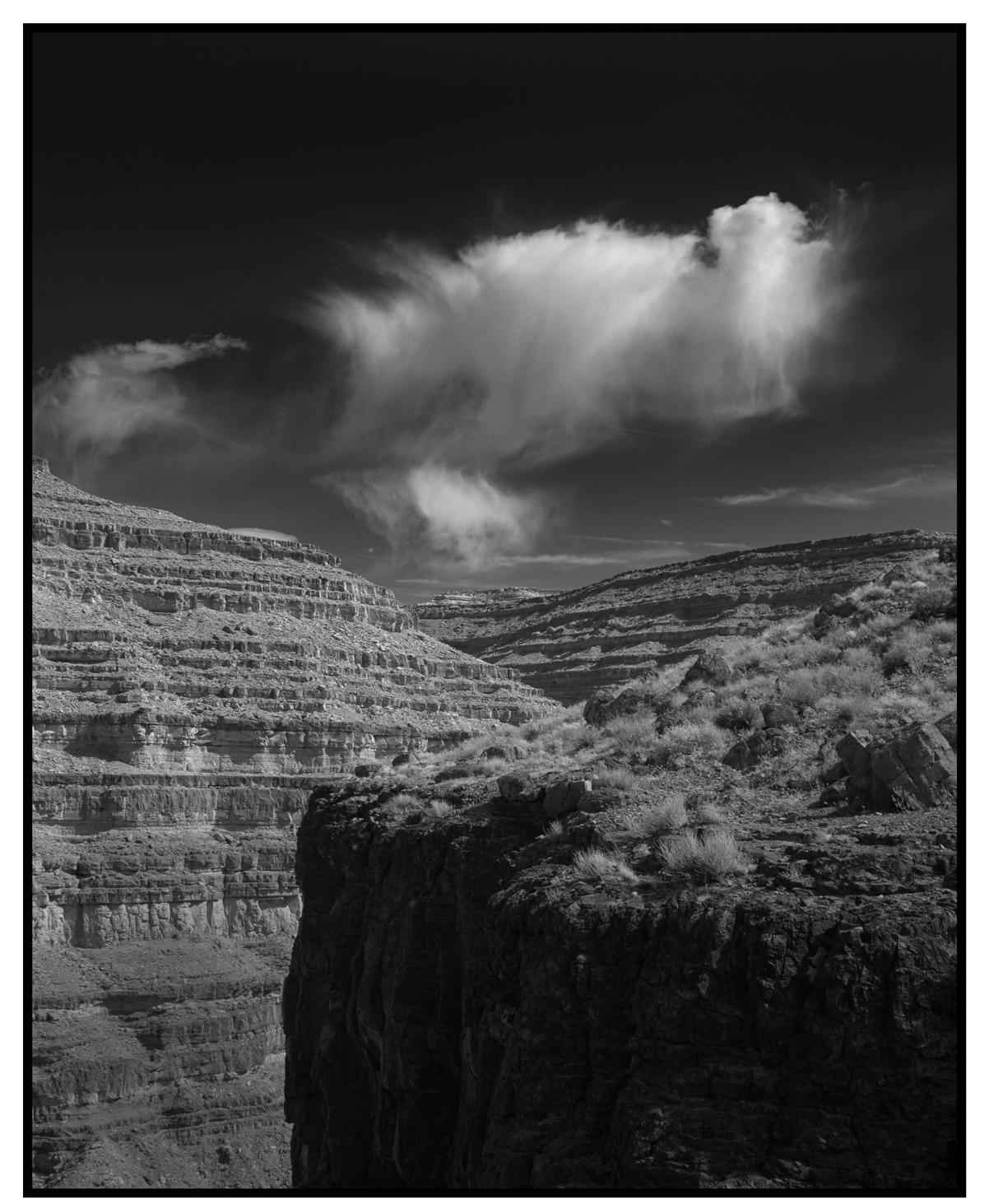
jasper-replaced fossils; brachiopods among the most spectacular (Fig. 2)
Once we hiked back down to the rafts on the down-river side of Mendenhall Loop, we floated another six miles downriver, through the famous Goosenecks of the San Juan, descending quickly down through the lower Ismay and Desert Creek intervals of the Paradox Formation. The repetitive cyclicity of Pennsylvanian strata in the San Juan River canyon is a striking, and its recognition was important to the early development of sequence stratigraphy. These strata are reflective of glacio-eustatic sea-level fluctuations that dominated sedimentation during Permo-Pennsylvanian southern hemisphere glaciation. Here we beached the rafts on river left to hike (stop 1b) into the core of a well-preserved carbonate buildup in the Akah interval of the Paradox Formation. Fabulous cavernous preserved primary porosity is present in these spectacular buildups

of Chaetetes (calcareous sponges), microbial boundstones and encrusting foraminifera (Fig 3). Once our eyes were tuned to these intriguing Pennsylvanian carbonate buildups, we were able to spot them from our rafts at multiple stratigraphic horizons, often adjacent or stacked on top of one another (Fig 4). We re-launched our rafts, but as our first-choice campsite was occupied, floated another mile downriver to camp on river left.
On day two, we broke camp and launched into the San Juan River, which was exceptionally high and swift this year at 8000 cfs. The strong current meant that rafting was challenging, but also that many of the most interesting bioherm architectures, such as current-oriented stromatolites, were passed a little too quickly to fully appreciate them. Gary made a most valiant effort in his kayak to paddle between all the rafts and kept us apprised of interesting things to watch out for on the towering cliff faces. Luckily, Stop



2a afforded us a close up view of a Barker Creek bioherm with onlap geometries, as well as Akah interval microbial buildups with stacked Chaetetes buildups. Our second stop of the day (2b) focused on the identification of a sequence boundary and 9m deep incised valley system, key evidence of local sea level falls that have been potentially linked to eustatic cyclicity with the aid of geochronology and conodont biostratigraphy. The day ended early with camp set on the lower Honaker Trail campsite and some refreshing swimming.
On day three, we awoke extra early for 0600hrs breakfast and 0700hrs hike up the Honaker Trail to famous Horn Point (Stop 3a). The Honaker Trail was built in the 1890s to bring miners and their equipment down 1200 vertical feet from the canyon rim to exploit a placer gold discovery. However, this trail was never used for its intended purpose, and legend has it that the unfortunate Henry Honaker only collected enough gold to make a wedding ring for his wife. Fortunately for keen hikers and excited geologists, the trail offers an incredible opportunity to closely examine ‘the life of our party,’ the Paradox Formation, and the overlying Honaker Trail Formation. These alternating layers of grey limestone and red siltstone and mudstone stack to form a spectacular sheer cliff section, exposing most of the Pennsylvanian stratigraphic section. From Pinkerton Trail Formation, upward through the Paradox Formation, extending all the way to the top of the Honaker Trail Formation, these cliffs display the gradual upward shift from shallow marine environments (grey limestone) to more terrestrial clastics (red silts and shales). Henry Honaker’s fame lives on in the naming of this spectacular trail, and both Honaker and his trail are immortalized as the type section of the Honaker Trail Formation. After this, we pushed off into the river, accompanied by wafts of natural oil seep smells, and enjoyed more views of the Akah stacked bioherms (including the “HoHo” with evidence of syn-sedimentary subsidence) and paleovalley channels that defined the stratigraphic subdivisions. The exhilarating Class 3 Government Rapids kept our full attention as we skillfully navigated through them, as well as several other exciting rapids, enroute to our campsite at Slickhorn Gulch.
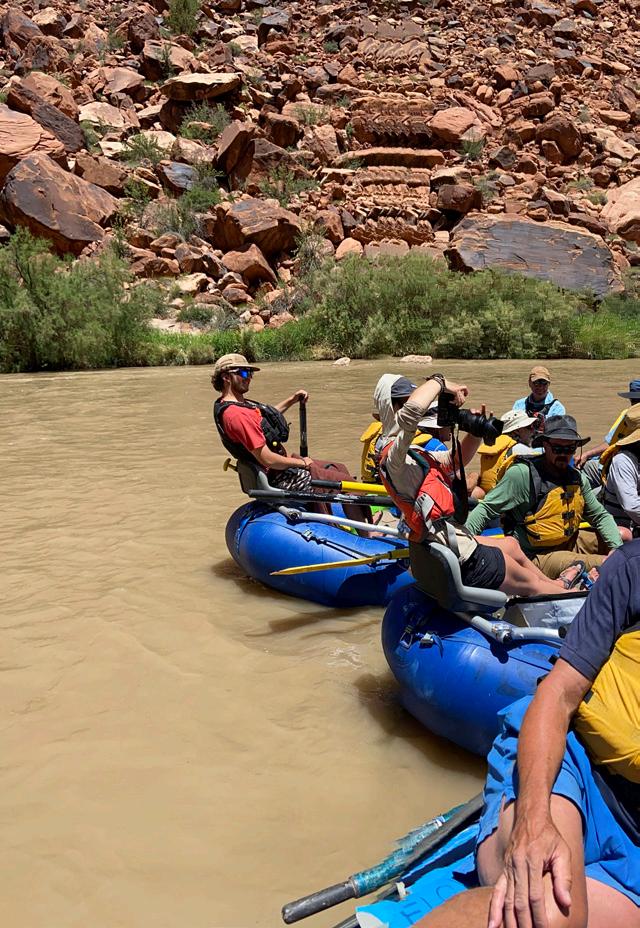
Day four started with an early hike up beautiful
Slickhorn Gulch to see the facies and sequences of the upper Honaker Trail Formation in more detail (stop 4a), followed by lunch and the boat launch. Outcrops featuring beautiful jasper-replaced productid & spiriferid brachiopods caught the attention of many, as did shallow spring-fed ponds filled with pollywogs and baby frogs! Oil seeps along the river at Slickhorn Gulch caused wildcatters to drill two wells just above the mouth of the gulch in the 1950’s. Promising shows of oil, reportedly up to 24bopd, were encountered at shallow depths (245-550ft) but
no commercial production was ever established. After a mile of climbing up the gulch, along the trickle of water flowing down the canyon, intrepid hikers discovered a pool deep enough for swimming. Many participants refreshed themselves in the cool, clear water and removed a layer of San Juan River silt from their bodies.
Following our launch on a smooth & straight stretch of river, we re-enacted the Pangea convergence by linking our rafts (Fig 5), gathered together for one last review of the Pennsylvanian stratigraphic section, as we left it behind and floated upward through the Permian. Camp was at the Oljeto Canyon (4b), followed by a spectacular hike into the Early Permian (Wolfcampian) Cedar Mesa Sandstone, dominated by eolian dunes, sandsheets and fluvial interbeds, forming an extensive erg system which is an excellent analogue for the Jurassic Norphlet
Formation of the northern Gulf of Mexico rim (Fig. 6). This southern margin of the Cedar Mesa erg can be divided into three informal units. A basal eolian-dominated unit, a medial unit with a higher percentage of sand sheets and extradunal deposits, and an upper interval with interbedded eolian dune intervals and extradunal facies. We examined paleosols with rhizoliths, pedogenic carbonate, and non-marine trace fossils which suggested fresh or brackish water within the dune sea and indicates that incursions of the playa evaporites were limited. The highlight of this day, however, was undeniably the hunt for “mud-bear” fossil imprints. These long-clawed mammal-like reptiles left impressions of their bodies, 1-3 feet in length, in the shallow water interdune regions, and appear to have scratched out hollows in the sediment in search of food. Preservation of these traces was truly spectacular, and even the engineers

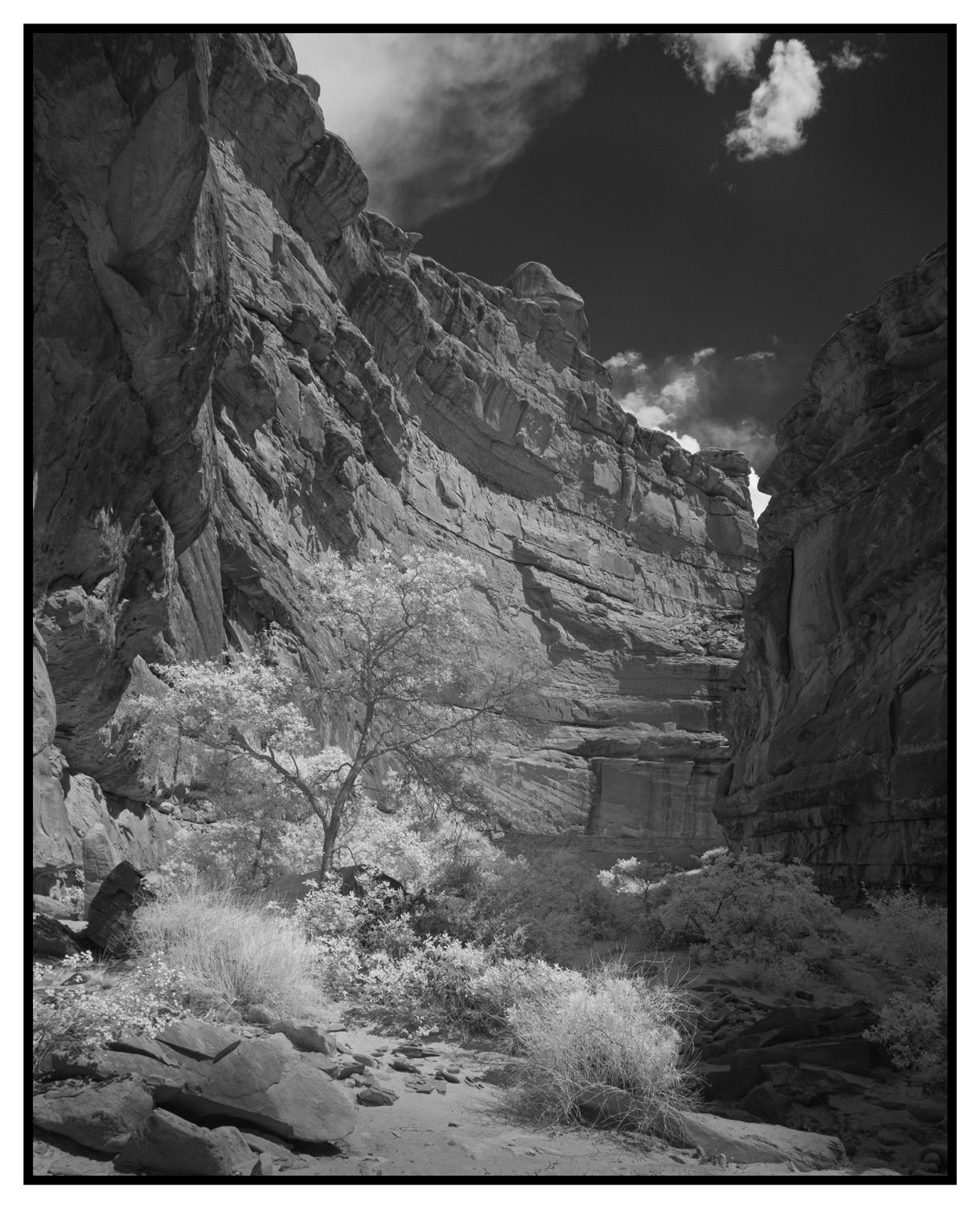
in the crowd were suitably awe-struck (Fig 7)

On day five we left behind our spectacular (though slightly soggy at high-river level) campsite on river left and made tracks (pun intended) downriver toward our takeout. As the canyon broadened above the top of the Permian Cedar Mesa Sandstone, our takeout at Clay Hills (formerly a river crossing, but now the site of a broad takeout at the end of a gravel road), we said hello to the Permian Organ Rock Shale and bid farewell to the mighty San Juan River above its confluence with the Colorado River in Lake Powell. An optional post-float trip dinner at Carver Brewing was capped by a brewery tour, led by float participant Bill Carver, one of the famous founding Carver brewing brothers. We were fortunate that Bill and several other non-geologists enriched the trip with their frequent “why does this matter” stares, often followed by insightful questions. Gary and Rip, and indeed all the participant geologists, were enthusiastic about sharing their geological knowledge and insights, resulting in the happy outcome of a few engineers who now consider rocks “not actually as boring as I thought”. Success indeed!
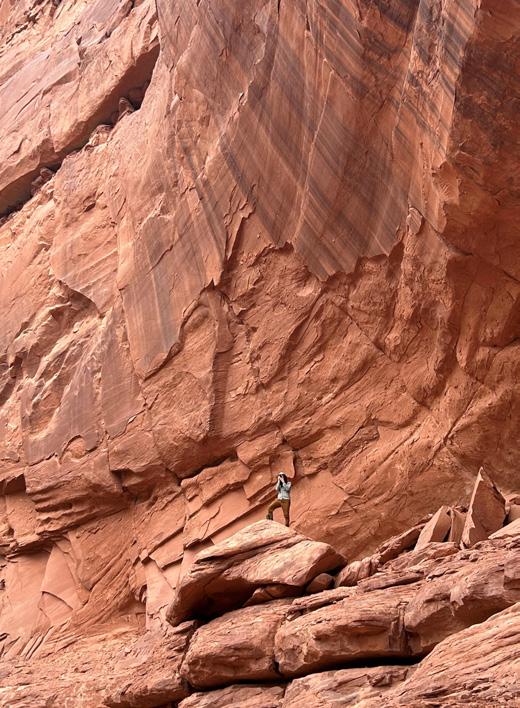
Speaker: Elizabeth S. Petrie
Date: October 4, 2023 | 12:00 pm - 1:00 pm


Presenter: Elizabeth S. Petrie, Western Colorado University
Fluid cycling and fracture permeability in the brittle crust is important to groundwater flow, waste storage, dissemination of minerals and the migration and accumulation of hydrocarbons. Subsurface injection of large-volume, high-pressure fluids is integral to development of unconventional resources, fluid disposal and enhanced geothermal production. As injection technologies improve and are deployed at a large scale, societal impacts and safety considerations require site-specific risk assessments.
Mechanical failure in rocks is a function of cohesive,
tensile, and frictional strengths and the current and historic in situ stress. In this talk, results from laboratory testing of analog clastic rocks are used to determine modified Coulomb-Griffith failure envelopes. Laboratory results show the maximum pressures each intact rock type can withstand and how these types of analyses can be used in risk assessments to better constrain the conditions under which mechanical failure can occur. These results illustrate how lateral and vertical anisotropy including lithological changes, the presence of fractures, or structural diagenesis associated with faults will result in variations in failure envelopes and fracture gradients.
ELIZABETH S. PETRIE is the Moncrief Chair in Petroleum Geology and Professor of Geology at Western Colorado University. She has B.S. degrees in geology and biology from the University of New Mexico, an M.S. degree and a Ph.D. in geology from Utah State University and worked as a petroleum geologist for 7 years. Since 2014, she has been a professor at Western Colorado University where she actively involves undergraduate students in research projects that focus on structural geology, rock mechanics, and fracture development. Dr. Petrie studies deformation of the Earth’s crust and how this deformation influences and is influenced by the movement of fluids in the subsurface. Her research combines quantitative observation from outcrop, laboratory experiments and subsurface data sets to understand the formation and distribution of fractures and fault zones and the role variations in rock mechanical properties have on failure across many scales of observation. Her research is applicable to a variety of topics including: understanding earthquake processes, the distribution of energy and mineral resources, and the subsurface storage of carbon dioxide or other waste materials.


T h i s c o u r s e a i m s t o i n t r o d u c e i n d i v i d u a l s t o a b a s i c w o r k f l o w t h a t w i l l a l l o w t h e m t o t a k e r a w d a t a a n d d e v e l o p a n o p i n i o n o f v a l u e f o r o i l a n d g a s a c r e a g e . T h e f o c u s w i l l b e o ns h o r e U S u n c o n v e n t i o n a l r e s o u r c e s
h i s c o u r s e a i m s t o i n t r o d u c e n d i v i d u a l s t o a b a s i c w o r k f l o w t h a t w i l l l l o w t h e m t o t a k e r a w d a t a a n d e v e l o p a n o p i n i o n o f v a l u e f o r o i l a n d a s a c r e a g e . T h e f o c u s w i l l b e o nh o r e U . S . u n c o n v e n t i o n a l r e s o u r c e s .
INSTRUCTOR: NICHOLAS (NICO) KERNAN
NSTRUCTOR: NICHOLAS (NICO) KERNAN
G e o l o g i s t & M i n e r a l R i g h t s A p p r a i s e r ,
T U E S D A Y , O C T O B E R 2 4 T H
T U E S D A Y ,
O C T O B E R 2 4 T H
8AM-4PM
DENVER EARTH RESOURCES LIBRARY
DENVER EARTH
U S D e p t o f I n t e r i o r
G e o l o g i s t & M i n e r a l R i g h t s A p p r a i s e r ,
U S D e p t o f I n t e r i o r
RESOURCES LIBRARY
8AM-4PM Register @rmag.org


Speaker: James Hagadorn
Date: November 1, 2023 | 12:00 pm - 1:00 pm
Presenter: James Hagadorn, DMNS and Steve Fryberger, DMNS
The Permian Lyons Sandstone of Colorado is predominantly a highly permeable quartz-cemented sandstone that is an important hydrocarbon, helium, and building stone resource. The unit is also a destination for produced waters. More significantly, the Lyons is a lynchpin for our evolving understanding of ancient eolian systems. The Lyons is exposed along the Front Range of Colorado and extends throughout the Denver Basin, where its sandstones are dominated by fine to very fine well-rounded quartz and subordinate feldspar grains. Its sandstone strata are often characterized by sweeping cross-bedding and planar lamination, and are characterized by thin intervals where carbonate cements and evidence of desiccation and meteoric diagenesis are pervasive. Sandstone bedding and bedforms in the unit, exemplified by outcrops in Lory State Park and vicinity, record southwardly directed winds with subordinate flow from the east and south. In addition to facies produced by dunes, the Lory State Park Lyons outcrops also contain facies that were produced in interdune (or interdraa?) areas populated by small dunes, sand sheets and sabkha facies.
Assemblages of detrital zircon grains from the Lyons are heterogeneous in their origins and compare well with eolian-dominated strata from other parts of Colorado and the American West, suggesting that
the unit was part of a well-mixed eolian system that received sediment from as far away as the Appalachians. Yet many of the sandstones in the Lyons are feldspathic to arkosic, are intercalated with minor conglomerate and thin mudstone intervals, and locally are capped by paleosols.
These observations and interpretations are internally consistent with the Lyons Sandstone having been deposited in eolian, fluvial, lacustrine and sandflat-playa settings. These settings are also common in the units that underlie and overlay the Lyons (Fountain, Ingleside, Owl Canyon, and Lykins formations). For example, there are thin intervals in the Fountain that were produced by eolian dunes and sand sheets, the Ingleside Formation contains thick sandstones produced by large dunes and interdunes, and the Lykins Formation is dominated by red siltstones thought to reflect loess. These occurrences lend support to the interpretation that along the Front Range and western portions of the Denver Basin, the Lyons was deposited as one of several eolian systems, that during the Late Pennsylvanian-Permian arid event in Western Pangea, lapped up onto and mixed with streams carrying sediment from the foothills of the Ancestral Rockies. This entire system was likely surrounded by sediments of a vast, midcontinent redbed/playa system.
DR. JAMES HAGADORN, Tim & Kathryn Ryan Curator of Geology at the Denver Museum of Nature and Science, is a detective in deep time, seeking to understand how our planet has changed. With a combination of field- and laboratory-based geology, his research informs us about how Earth’s outer membrane has functioned in the past and how it responds to perturbations—today, millions of years ago, and potentially in the future.
structure, sedimentary features,



historic quarry remains, especially in the Lyons Sandstone, and a geologic traverse from the Pierre Shale to the Fountain Formation. The steeply dipping stratigraphy in the Open Space affords an opportunity to examine all the lithologies exposed



Red Rock Canyon has a significant role for geologic resources and their importance to Colorado history. Rarely do we have an opportunity to see abandoned quarries, dating back to the late 1880’s, which supplied a variety of earth materials for construction projects from the Niobrara, Dakota, Morrison, Lykins, Lyons, and Fountain formations.
Our field trip leader, Sharon Milito, has the distinction of being the RMAG Teacher of the Year in 2011 and the first person to find a fossil skull in a concretion in Corral Bluffs, an outstanding collection of Paleocene fossils representing development of mammals, insects, and plants following the K-Pg Chicxulub asteroid impact Sharon is a co-author of an extensive publication on the Red Rock Canyon Open Space and will lead us to the many geologic sites of interest.
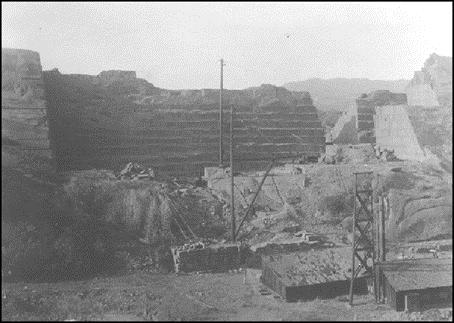
My journey into the field of geosciences was born out of a deep-seated fascination with the natural world that enveloped me during my formative years in Nigeria. Growing up amidst a landscape rich in natural resources hidden beneath the Earth’s surface, I found myself increasingly captivated by the intricacies and possibilities associated with these deposits.
During my high school years, my aspiration was to study petroleum engineering, as I believed it to be the discipline closest to fulfilling my insatiable curiosity. The prospect of uncovering the secrets concealed within the Earth fueled my determination. However, life took an unexpected turn when I encountered a setback in the form of a failed entrance examination for admission into a petroleum engineering program. Faced with the prospect of retaking the examination in the subsequent academic year, I seized the opportunity to enroll in a pre-degree program in sciences.
During this period of academic reflection and redirection my horizons expanded, and I stumbled upon the captivating realm of geosciences. As I delved deeper into this dynamic discipline, I experienced a profound and enduring connection. Geosciences not only afforded me the opportunity to engage in the exploration of the Earth’s resources but also to explore the Earth itself in all its multifaceted dimensions. The journey was not without its challenges, particularly as a first-generation scholar, but I remained resolute and unwavering in my pursuit of knowledge and excellence.
I began my studies at Ebonyi State University, located in the southeastern region of Nigeria, where I earned a Bachelors in Geology. During this time, I was exposed to groundwater and mineral exploration. I got my Masters in Petroleum Science and Engineering at the State University of Campinas, Brazil, working in the reservoir characterization group investigating fractures and karst in the pre-salt of the Santos Basin. In 2022, I joined Dr. Zane Jobe’s group at CSM for my PhD, focused on using cool physical experiments to understand transport dynamics in carbonate turbidities.
Ultimately, I owe a debt of gratitude to my mentors and the sessions organized by professional associations like the AAPG and NAPE, which I’ve been a part of since my freshman days in college. The rich insights from my engagement with mentors guided and enriched my academic journey, enabling me to transform a youthful curiosity into a lifelong passion for geosciences.
RMAG’s Diversity and Inclusion Committee is featuring a monthly Member Corner. We hope you’ll enjoy learning about the diverse community of Earth scientists and wide variety of geoscience disciplines that comprise our membership. If you would like to appear in an upcoming column, or if there is someone you would like to nominate, please contact staff@rmag.org
I grew up in Ikorodu, a small town just north of the Lagos Lagoon in Nigeria. Ikorodu’s unique location provided an immersive natural experience that played a pivotal role in shaping my fascination with the Earth’s geological wonders. The intricate network of waterways and estuaries surrounding the lagoon forms a dynamic ecosystem teeming with life, from the lush mangrove forests that line the shores to the diverse aquatic species that thrive in its brackish waters.
My career as a geoscientist has been marked by diverse roles and experiences that have enriched my expertise. I first interned as a field geologist with Home-waters Geoscience Solutions. We conducted geological mapping and geophysical surveys in search of critical minerals and groundwater in the Benue Trough of Nigeria, where the Santonian orogeny created unique challenges and opportunities for groundwater and hydrothermal deposits.

My initial exposure to the oil and gas industry was during an internship at Degeconek Nigeria Limited. I had the opportunity to work on several fields in the Niger Delta Basin, Nigeria, where I contributed to seismic and petrophysical evaluation and field development planning efforts first as an undergraduate and returned later in 2019 as a graduate intern.
As a Geoscience Intern with Shell US Inc. this past summer, I supported the Perdido Development team in the Gulf of Mexico. I synthesized regional data, seismic stratigraphy, and depositional trends in evaluating prospects and quantifying subsurface risks and opportunities associated with proposed wells, including mapping and quantifying zeolitization trends.
The best lesson I have learned is that a successful career in geosciences requires a combination of
adaptability, problem-solving abilities, commitment to lifelong learning, and capacity to collaborate with diverse teams. It is a journey of continuous growth and exploration.
Embarking on a career in geosciences promises an exhilarating and fulfilling voyage. It is essential to nurture patience and acknowledge that obstacles can often serve as pivotal points toward your future path or offer valuable redirection. Maintaining an open mindset and a readiness to collaborate as part of a team is crucial for achieving success in this field. Do not hesitate to seek assistance, engage in meaningful conversations, and leverage the abundant wealth of knowledge and experience that surrounds you.
I’ve had the privilege of both participating in and leading several enlightening field trips, but one that truly stands out is my time in La Jolla, Southern California, where I had the opportunity to explore shallow- and deep-water deposits in all their glory. The accessibility to well-exposed outcrops with fresh surfaces and continuous sections was a revelation that allowed me to appreciate the ‘source to sink’ perspective in geological processes.
What made this experience truly exceptional was the guidance of Dr. Piret Plink-Bjorklund, whose expertise and teaching style were nothing short of remarkable. Her emphasis on observation-based geology, as opposed to purely model-based approaches, transformed our field trip into an immersive learning adventure.
I would be a lawyer because I enjoy the intellectually stimulating nature and problem-solving orientation of the profession. The highlights for me include devising practical solutions when dissecting complex legal issues, which are quite similar to what we do as geoscientists. I also like the meaningful impact on society while advocating for marginalized and underserved communities.

I listen to many genres and my playlist is a mix of various kinds. It often depends on my mood. I
recently developed a lot of interest in Brazilian music, which is diverse. I enjoy Sertanejo, Forro, Brazillian Pagode, and Funk. I also enjoy Afrobeats and Jazz.
I do a few sports like volleyball, badminton, pingpong, and soccer, but volleyball is my favorite. I also enjoy taking hikes and traveling. In addition, I am actively engaged in community-based events and STEM enrichment programs.

The first on my list is the Bahamas, and then Maldives and Northeastern Australia. I wish I could spend time studying the fascinating carbonate transport dynamics that shape these islands and coastlines while enjoying their beautiful beaches.
DOLOMITE AND ASSOCIATED PORE SYSTEMS THE ROCKY MOUNTAIN REGION – EXAMPLES FROM THE MARINE PHOSPHORIA ROCK COMPLEX (PERMIAN) AND THE LACUSTRINE GREEN RIVER FORMATION (EOCENE)
Instructors: Maxwell Pommer, CSM/Premier Corex & Rick Sarg, CSM

NOVEMBER 16-17 USGS CORE RESEARCH CENTER
$400 for Members
$500 for Non-Members
REGISTER @ RMAG.ORG
This two-day core workshop hosted at the USGS Core Research Center examines and discusses examples of dolomite and associated pore systems that formed in major late Paleozoic marine and early Tertiary lacustrine sedimentary systems in the Rocky Mountain Region.



Fourteen geologists had an enviable opportunity to visit one of the largest and oldest meteorite impact crater strewn fields located on the northeast flank of the Sheep Mountain anticline near Douglas, Wyoming. More than 40 impact structures have been confirmed in the 280-million-year-old, Pennsylvanian-Permian Casper Formation. Additional craters, possibly 60 to 90 more, have been identified from drone images.
These are indicated as red dots on the simplified geological map (Figure 1). This documentation makes the full extent of this impact crater strewn field, discovered in 1992 by Gene George, at least 7.5 kilometers long in a SE-NW trajectory along the anticline and at least 1.5 kilometers wide.
Individual craters strewn over the area may have been produced either from the breakup of meteorites
FIGURE 1:
Simplified geological sketch and location of confirmed and possible impact craters at the NE slope of Sheep Mountain anticline, WY, USA. All craters occur in the uppermost Casper Fm. (+/−280 Myr) at the immediate contact to the Goose Egg Formation, Opeche Shale Member (verbatim from Figure 1, Kenkmann et al, 2018).

passing through the Earth’s atmosphere, or from secondary craters blown out from those initial, larger craters. Many of the dozens of possible craters are located on inaccessible private property, making field observations and data collection impossible at this time. However, permission has been granted for detailed scientific analyses on the southeastern part of the anticline (Figure 2) that confirm a portion of the drone images.
These impacts occurred in early Permian (possibly late Pennsylvanian as well?) time after Casper Formation deposition and before the deposition of the overlying Permian Opeche Member of the Goose Egg Formation (Figure 3)


The Casper Formation is a clean, cross-bedded, orthoquartzite deposited in a mixed coastal- shoreface environment that includes eolian and fluvial facies. Except for minor amounts of plagioclase and
localized hematite precipitates, the original sand was composed of pure quartz. A gradual transgression and immediate deposition of Permian Goose Egg siltstones and shales prevented erosion of the Casper craters. Later diagenetic quartz cementation transformed the sandstone into an indurated quartzite. The craters, which are confined to the Casper Formation, are recognizable while traversing the slope of the Sheep Mountain anticline. Most of the craters are ellipsoidal in shape. Two craters in particular, SM2, a nearly circular one, and SM1, more ellipsoid in shape (See Figure 2 for locations), provide excellent examples of the impact features. Each of these show the outline of the crater and the overturned flaps or preserved ejecta blankets resulting from the meteorite impact (See Figure 4).
Sundell suggests that impact direction may actually be perpencular to the impact trajectory shown in Figure 4. Examination of additional craters may provide further evidence of trajectory directions. What is obvious from field observations, however, is that one side of the craters have steeper walls whereas the opposite sides have gentler walls as shown in the panoramic view of SM2 crater in Figure 5.
The inferred intense heat and pressure of the impacts created both shock metamorphism and fracturing in the Casper Formation, as well as subsequent injection of orthoquartzite veins as seen in Figure 6
These veins and other samples from the crater rims contain shocked quartz grains, characteristically indicative of impact features. Various types of deformation microstructures are also present in the collected quartz grains (Figure 7).
There are many unanswered questions regarding the Douglas Impact Crater Strewn Field and Professor Sundell and his students will continue to study the area which has attracted a lot of visiting scientists. Geologist/Astronaut Harrison “Jack” Schmitt was one of the notable visitors and has a rock named for him (Figure 8).
The RMAG On the Rocks Field Trip committee extends its sincere thanks to Professor Sundell for a fascinating trip (Figure 9).
Kenkmann, Thomas, Sundell, Kent A., and Cook, Douglas, 2018, Evidence for a large Paleozoic Impact Crater Strewn Field in the Rocky Mountains: Scientific Reports, published online Sept. 5, 2018, licensed under a Creative Commons Attribution 4.0 International License, http://creativecommons.org/licenses/by/4.0/ (copy of license). DOI: 10.1038/s41598-018-31655-4

Stone, D.S., 2002, Morphology of the Casper Mountain uplift and related, subsidiary structures, central Wyoming: Implications for Laramide kinematics, dynamics, and crustal inheritance: AAPG Bulletin, V. 86, No. 8, Fig. 3, p. 1420.

that pristine surfaces are preserved for careful observation.

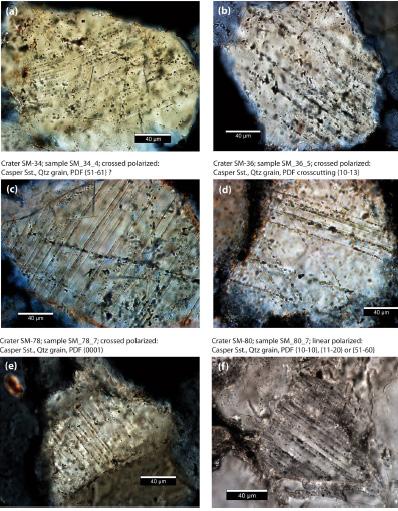














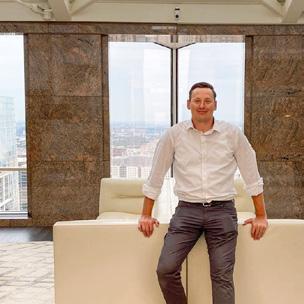
RMAG offers a high value to our membership and community so I want to help ensure its future through growth. Like many professional organizations serving extractive resource trades, some people in our wider community would rather our trades not exist. Often this shortsighted opinion is based on events in our changing world and polarizing high-frequency media platforms that drive divisions in our community rather than help educate and unify it. This presents us with a unique challenge where we can help ourselves by helping our community. One of the primary ways I’d like to help address this is by stewarding the process of making our luncheon content available to the public via a YouTube channel after a proprietary period. I believe this can better achieve RMAG’s mission via the following:
By disseminating the contained geologic information we better educate our membership and help our community understand the practical applications of our trade.
Help our community understand that many of the geologic concepts used in responsible resource extraction are also key to developing green technologies including CCUS, “gold” hydrogen, and geothermal.
Underserved and under-exposed youth may not yet see geoscience as a viable career path. By allowing access via a format with growing use; especially by younger generations, we can inspire future careers and research.
By reaching a wider geographic audience we increase our potential membership base & sponsorship base.
Items that speakers choose to redact would drive attendance for inperson events.
Monetization features of the platform could eventually be a significant revenue stream for RMAG allowing us to better serve our membership and community.
Originally, a geneticist but one of my many wonderful mentors, Karl Mayo, in high school asked “Could you sit inside that long?” changing my mind to a geologist in an instant. That said my second-grade teacher probably had some insights on my future career after I filled my pencil box with crinoid stems from the Pennsylvanian-aged limestone gravel on the playground.
information we better educate understand the practical
the geologic concepts to developing green and geothermal. yet see geoscience format with growing use; inspire future careers increase our potential
drive attendance for eventually be a significant serve our membership
community so I want professional organizations our wider community shortsighted opinion is high-frequency media platforms help educate and unify can help ourselves like to help address luncheon content available period. I believe this be when you gr
in high school a ant That said m er I filled my pen playground
The ophiolite complexes in Washington State
Favorite Food
Dessert! Education

Why do you want to be part of the RMAG Board?
When I first moved to Denver nine years ago, RMAG was the first organization I joined to connect with the local Geoscience community Over the years, this vibrant community has been instrumental in my personal and professional growth. Now, I'm excited to give back by contributing to RMAG's continued growth and impact in the coming years. My recent experience serving as the Secretary on the board for the past two years has been incredibly fulfilling. During this time, I've had the privilege of participating in decisions that shape RMAG and support its mission of promoting interest in geology, allied sciences, and practical applications. If elected this time, my primary focus will be twofold. First, I'm dedicated to fostering diversity within our membership. Inclusivity is crucial for the future of our field, and I'm committed to expanding RMAG's reach to ensure that a broader range of professionals can benefit from our community. Second, I aim to broaden the range of technical offerings within RMAG. Our field is constantly evolving, and I believe RMAG should reflect these changes. By offering a wider variety of technical resources and opportunities, we can stay at the forefront of geoscience. I would be truly honored to play a pivotal role in shaping RMAG for future generations of geoscientists. I'm excited about the potential to serve as the President and lead our organization towards even greater success. Thank you for considering my candidacy.
What did you want to be when you grew up?
What didn’t I want to be? A princess, a doctor, an actress, retired…..
B.S. in Geology from Eastern Washington University 2008
M.S. in Geology from Washington State University 2012
I have been serving as the Secretary of RMAG and the chair of the membership committee for RMAG for the last two years and have been an active member for the last 6 I also am an active member of the Denver Geophysical society as well as WOGA (women in oil and gas association) and WEN (Women’s energy network)
Summer 2012: Geology Internship at Exxon Mobil worked with the Sedimentology and Stratigraphy research group mapping fluvial structures in heavy oil deposits. December 2012-present: SLB Digital and Integration. At SLB I started as a geologic interpreter in the salt interpretation group for the Gulf of Mexico which I did for 4 years. After 4 years I transitioned into seismic sales for the Rockies and am now Technical Sales supporting Petrel Geology for the Rockies region
Publications Give me a Break: ML assisted Seismic Interpretation and applications for US Land presented at the 3D Seismic Symposium 2023
I’ve spent the most time with the Wall Creek Member of the Frontier Formation near Kaycee, WY, but due to the plethora of rattlesnakes that like to call it home I can’t say that it’s my favorite. My favorite outcrop is probably the Burgess Shale quarry in Yoho National Park, British Columbia. It’s a fun hike to get there, surrounded by stunning views, and is famous for its fossils!
I like to think of myself as somewhat of a breakfast burrito connoisseur
B.S. Earth Sciences, Cal Poly (2015)
M.S. Geosciences; University of Montana (2018)
I am very grateful for RMAG’s role in facilitating my own professional development, as it has been a main avenue for mentorship, classes, field trips, volunteering, and networking The Mountain Geologist provided my own personal entrance into publishing in a peer-reviewed environment; I found this experience to be one of the most rewarding academic and professional milestones I’ve been a part of, and I like to do what I can to encourage students and professionals to pursue writing with both of RMAG’s publications. I want to further give back to this community by engaging in a more involved role on the Board, where I can continue to support RMAG’s mission in an environment aligned with my experiences and strengths. In particular, I believe that my editorial experience with the Outcrop Newsletter team has provided the learnings and background needed to facilitate and guide the continued success of publications, as well as RMAG’s overall mission of fostering engagement, research and fellowship amongst its members.
What did you want to be when you grew up?
Growing up I floundered between artist, paleontologist, hunting guide, landscape architect, forester, wildlife biologist, civil engineer…. basically I had no idea. I’m glad I found geology!
I am a senior geologist with SM Energy, where I began my career in the oil and gas industry and have worked 5+ years My current role is in Permian asset development, and I have had previous positions on both operations and exploration teams.

I’ve been an RMAG member since my time in graduate school, having been involved in various ways including the Mentorship program and On the Rocks committee. The Publications Committee is where I have spent my primary involvement with RMAG – I joined the Outcrop editorial team in January 2020, and have been the lead editor for the last two years.
La Fontaine, Nathan M., et al. "Integrated outcrop and subsurface geomodeling of the Turonian Wall Creek Member of the Frontier Formation, Powder River Basin, Wyoming, USA." Marine and Petroleum Geology 125 (2021): 104795
La Fontaine, Nathan M , and Hofmann, Michael H "Quantifying the stratigraphic and spatial facies distribution in an ancient mixedinfluence delta.” The Mountain Geologist (2019): 19-44.
La Fontaine, N., Hofmann, M.H., Le, T. T., Hoffman, T., “Facies Architecture and Controls on Reservoir Behavior in the Turonian Wall Creek Member of the Frontier Formation in the Powder River Basin, Wyoming”. AAPG Annual Meeting (2018), Salt Lake City, UT
Why do you want to be part of the RMAG Board?
I have always volunteered to continuously learn and grow my technical, and social, networks wherever I have lived My family and I moved back to Denver in 2021 and since jumping into the consulting world, want to continue doing this and serving the community I live in. RMAG seems like the perfect choice of what to support to do both these things.
What did you want to be when you grew up?
Toss up between two Wolfcamp cores I described for a company I used to work for. They were taken from Pecos County, TX and really highlight the complexity of the basin even though they are only a few miles apart from one another.
Favorite Food Tacos!
Education
Bachelor of Arts in Geology from The College of Wooster, 2009
Master of Geoscience from University of Colorado at Boulder, 2011

Master in Business
Administration from St. Edward’s University, 2022
My initial thought was a teacher, because that what my parents did for their entire career. Geologist was never on my list until I randomly took a class in college.
Marathon Oil – Operations and Development Geologist – 20112015
Parsley Energy – Development Geologist – 2016- Jan. 2021
Centennial Resource Development/Permian Resources–Development Geologist – Feb. 2021-Dec. 2022
Core Geologic – Development Geologist/Technical Project Manager – April 2023-Present
I have been involved with AAPG since 2009, beginning as a student member I currently serve as the Treasurer on the AAPG Executive Committee. I have volunteered on the technical planning committees for both AAPG ACE, IMAGE, and URTeC as well. Since moving to Denver in 2021, I have served as a Rocky Mountain Section Delegate in the House of Delegates. This will be my first involvement with the RMAG board and I look forward to additional years of involvement.
5 words that describe me
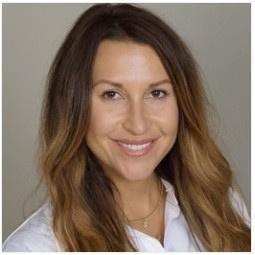
As for the RMAG board, I wanted to become a part of something more and to become more connected to the geologic community. I want to grow in my career and as an individual. Becoming Secretary is a huge step in that direction to achieving these goals that I’ve set for myself! I am thankful for even this opportunity to try! run a profitable consulting business and would like to learn more on the financial innerworkings of a successful professional organization, having volunteered with RMAG in other capacities. RMAG is an important and impactful society that has been around for over 100 years, and I want to volunteer my time to have it continue to be a staple in our geoscience community for many years to come
Favorite Outcrop / Core
I really love the scenery in Taos and the makarah outcrop!
When I was a kid I wanted to be a marine biologist or a vet! I volunteered at the local shelter all of the time, even talked my dad into a few animals over the years. I’ve just always been an avid animal lover! I grew up riding horses and even showed goats at the 4H stock show. I mean, who didn’t want to be a vet at some point though!
Favorite Food
Chicken Fried Steak. Why does it have to be so bad for you?
Education
BA Texas A&M College Station
High School Math Teacher for 8 years
Raptor Consulting - Sales representative 4 years
Huge RMAG supporter! I try to be a part of everything I can! Also a member of WTGS and DPC
Titus Canyon
Megabreccia Outcrop in Death Valley National Park
Favorite Food
Peach Cobbler (bonus if it’s a la mode)
Education
M S Geology, Texas A&M University (2021);
B A Geology & Geography/GIS, University of Colorado at Boulder (2019)
Involvement with RMAG or other Professional Organizations
Current Continuing Education Committee member, regular membership with RMAG, AAPG, SPE, and SPWLA.
RMAG is an important part of fostering the development and engagement of geologists in the Rocky Mountain Region. I have experienced this firsthand, as a young professional, recently both new to the area, and new to the profession. RMAG helped kickstart my career through networking with professionals both in a wide range of industries and academia, insightful short-courses, and field trips, and by connecting me with a mentor through the mentorship program. As secretary I will give back by leveraging my past experiences, not only to ensure consistent communication between the committees, board, and members, but also through working towards strengthening the size of our organization, especially among students and young professionals. If elected, I would be certainly honored to help RMAG continue to serve our community and field, for many years to come!
My eyes were always in the skies growing up I wanted to be either a pilot or an astronaut, to see new parts of the world or explore others While neither of those ended up being in the cards for me, I have had the opportunity to get my pilot’s license and pursue flying as a hobby where now my eyes are down below on all the magnificent geology all around us. While I may not be exploring for new planets, I do get to explore for new resources in the subsurface, so I have at least in part, scratched both of those childhood itches, directly or indirectly.
I am a Geologist with SM Energy in Denver. As part of their early-career rotation program, I am currently working with the Exploration division, after completing my first rotation with the South Texas Asset Development team.

Before my current role, I had previously interned at Shell (Deepwater GOM R&D, 2020), IHS-Markit (Kingdom Software Business Development, 2021), and Ovintiv (Chiefs and Exploration, 2022).
Publications
“Validating cuttings samples as an alternative to core samples in baseline geochemical vertical profiles for production allocation in unconventional reservoirs”, AAPG-SEG iMAGE Conference Presentation, 2022, Houston, TX



5 words that describe me
Inquisitive Collaborative Experienced Integrity Respectful
Favorite Outcrop / Core
Burgess Shale
Favorite Food
Mexican, although I will try most anything except liver and onions
What did you want to be when you grew up?
An Engineer
BSPE, CSM, 1978
MSPE, CSM, 1984

Why do you want to be part of the RMAG Board?
I have enjoyed being a member of RMAG for the last year It remains important for me to learn more about RMAG from its members as well as increase my technical knowledge of the geoscience of current oil and gas exploration and development. I hope to continue using that knowledge to improve collaborative efforts between SPE and RMAG and advance the industry’s ability to efficiently develop oil and gas resources. I believe that my prior experience as a Treasurer for both Denver Sections of SPE and SPEE will be helpful in a similar position with RMAG.
40+ years global oil and gas experience in positions progressing from staff engineer to technical management to senior leadership in public and private companies Led business units for majors and independents Served 8 years as a Commissioner with the COGCC, including Chairman for the last 2 years.
Current member of RMAG, SPE, SPEE, Tau Bet Pi Past member of COGA, Western Energy Alliance Past Section Chairman of Denver Sections of SPE, SPEE
Currently serve as chair of the SPE Denver Section’s Industry Advisory Committee
SPE 030992 – Putting Technology To Work – The Petroleum Technology Transfer Council
SPE 035835 – Putting Environmental Technology to Work for Independents
SPE 036013 – National Internet System for Independent Producers
Disclosing Coalbed Methane and Other Unconventional Resources - Conference Board of Canada, Calgary, 2003
The Challenge of Converting Unconventional Resources Into Economic Reserves - Strategic Research Institute, Denver, 2003 (Conference Chairman)
Oil Recovery Tool (ORT) Overview, Enercom Investment Summit, Golden, CO 2022
Acoustic Waves Improve Recovery in Permian Basin, OGJ 07August-2023
Why contribute?
Expanded geologic focus:
Why contribute?
• Reach
• Quarterly
• Permanent
Expanded geologic focus: Entire greater Rocky Mountain West Texas and New Mexico to -Continent

Expanded geologic focus:
• Entire greater Rocky Mountain area of North America
• Quick
• Every
• West Texas and New Mexico to northern British Columbia
• Entire greater Rocky Mountain area of North America
• Reach a broad industry and academic audience
• Great Plains and Mid-Continent region
• West Texas and New Mexico to northern British Columbia
• Quarterly peer reviewed journal
• Great Plains and Mid-Continent region
Why contribute?
• Reach a broad industry and academic audience
• Permanent archiving includes AAPG Datapages
• Quarterly peer-reviewed journal
• Quick turn around time
https://www.rmag.org/publications/the
• Permanent archiving includes AAPG Datapages
• Every subdiscipline in the geosciences
• Quick turn-around time
https://www.rmag.org/publications/the
• Every subdiscipline in the geosciences
Expanded geologic focus:

area of North America
• Entire greater Rocky Mountain area of North America
northern British Columbia region
• West Texas and New Mexico to northern British Columbia
• Great Plains and Mid Continent region
Email: mgeditor@rmag.org
https://www.rmag.org/publications/the -mountain-geologist/

5 words that describe me
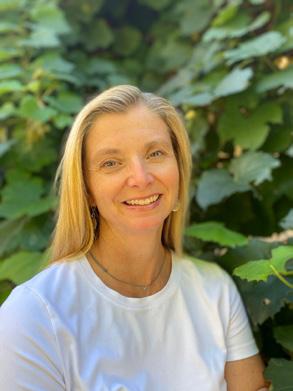
Why do you want to be part of the RMAG Board?
I run a profitable consulting business and would like to learn more on the financial innerworkings of a successful professional organization, having volunteered with RMAG in other capacities RMAG is an important and impactful society that has been around for over 100 years, and I want to volunteer my time to have it continue to be a staple in our geoscience community for many years to come.
What did you want to be when you grew up?
Favorite Outcrop / Core
I’m currently most inspired by my last trip which took us to the Faroe Islands, climbing and descending 1000’s of feet of mid Atlantic rift basalt flows carved out to form a landscape pitted with cirques.
Favorite Food
Any kind of dumpling
Education
Ph.D. Geological Sciences, University of Texas at Austin, 2004
M.S. Geological Sciences, Michigan State University, 1999
B.S. Geological Sciences, Michigan State University,1997
Someone that hung out of a helicopter over an active volcano, taking gas measurements. I had no idea geology was a profession until my second year in college.
Looking Glass, Ltd., (2017- present) Owner of consulting company that focuses on rock characterization
Tracker Resource Development (2011-2017) Senior Project Geologist
Cimarex (2008-2011) Senior Geologist
BP America (2004-2008) Reservoir Quality Specialist
Involvement with RMAG or other
Professional Organizations
I’m currently part of the RMAG Educational Outreach and Diversity and Inclusion Committees For several years, I was a reviewer for the AAPG Bulletin and occasionally still review manuscripts for various journals such as Marine and Petroleum Geology, Journal of Sedimentary Research, and Geology.
Makowitz, A., Lander, R., and Milliken, K.L., (2010). Chemical diagenetic constraints on the timing of cataclasis in deformed sandstone along the Pine Mountain overthrust, eastern Kentucky. Journal of Structural Geology, v. 30, p. 1923-1932
Although my first publication is still near and dear to my heart:
Makowitz, A. and Sibley, D.F., (2001). Crystal growth mechanisms of quartz overgrowths in a Cambrian quartz arenite. Journal of Sedimentary Research. v. 71 (5), p. 809-816



 By Terri Olson
By Terri Olson
The Girl Scouts of Colorado have a program called Inspiring Futures, in which they get speakers from various professions to make presentations about possible careers. The director of the program, Katy Herstein, reached out to RMAG to request talks by women geologists. Donna Anderson took the request to the Continuing Education Committee, and Katie Joe McDonough and Holly Lindsey stepped up and prepared material to show two groups of girls via Zoom in September, one evening for girls in grades K to 5, the other for Junior and Senior scouts (middle and high school). Holly was joined by Cat Campbell and Terri Olson in presenting to the younger group, and by Lisa Wolff for the Zoom with older Girl Scouts.
Both nights some of the girls wanted to know about our favorite rocks, some of which we happened to have handy in our offices to show on camera. The older girls also showed off their rock
collections. Lisa’s description of her research on the San Andreas Fault sparked a lot of awe based on comments in the chat. Other discussion addressed the importance of communication in a geology career, and responded to a question about underwater volcanoes.
These presentations were recorded so are available in the archives of the Inspiring Futures program. All the presenters had fun sharing our love of our science.
OCTOBER 3, 2023
RMAG Women’s Group Coffee.
Vibe Coffee. 10 AM-11 AM.
OCTOBER 4, 2023
RMAG: Luncheon. Speaker: Elizabeth Petrie, Western Colorado University, Talk Title: “Effects of variation in mechanical rock properties on fracture type and gradient”
OCTOBER 9-12, 2023
SPEM: Parasequences Research Conference
OCTOBER 12, 2023
DAPL: 50th Annual Denver Lan Institute
YPE: DNE TALK
DAPL: 10th Annual Rockies Bash
OCTOBER 24, 2023
RMAG Short Course: Oil and Gas Property

Valuation. Instructor: Nicholas Kernan, US Department of Interior
OCTOBER 28, 2023
On-The-Rocks: Red Rock Canyon Open Space Field Trip
NOVEMBER 1, 2023
RMAG Luncheon. Speakers James Hagadorn and Steve Fryberger, Denver Museum of Nature and Science. Talk Title: “The Lyons Standstone”.
The RMAG Foundation has received a generous gift from SM Energy’s Charitable Contribution Committee which will be designated for scholarships for K-6 students from under-served communities in the greater Denver area who will be attending earth science-related summer camps. Given the Foundation’s long history of funding
free admission for disadvantaged school groups visiting Dinosaur Ridge, it hopes to expand upon this relationship with a goal of enhancing energy topics in the week-long summer camps. The Foundation is committed to providing the resources needed to assist camp co-directors who will plan the programs.







